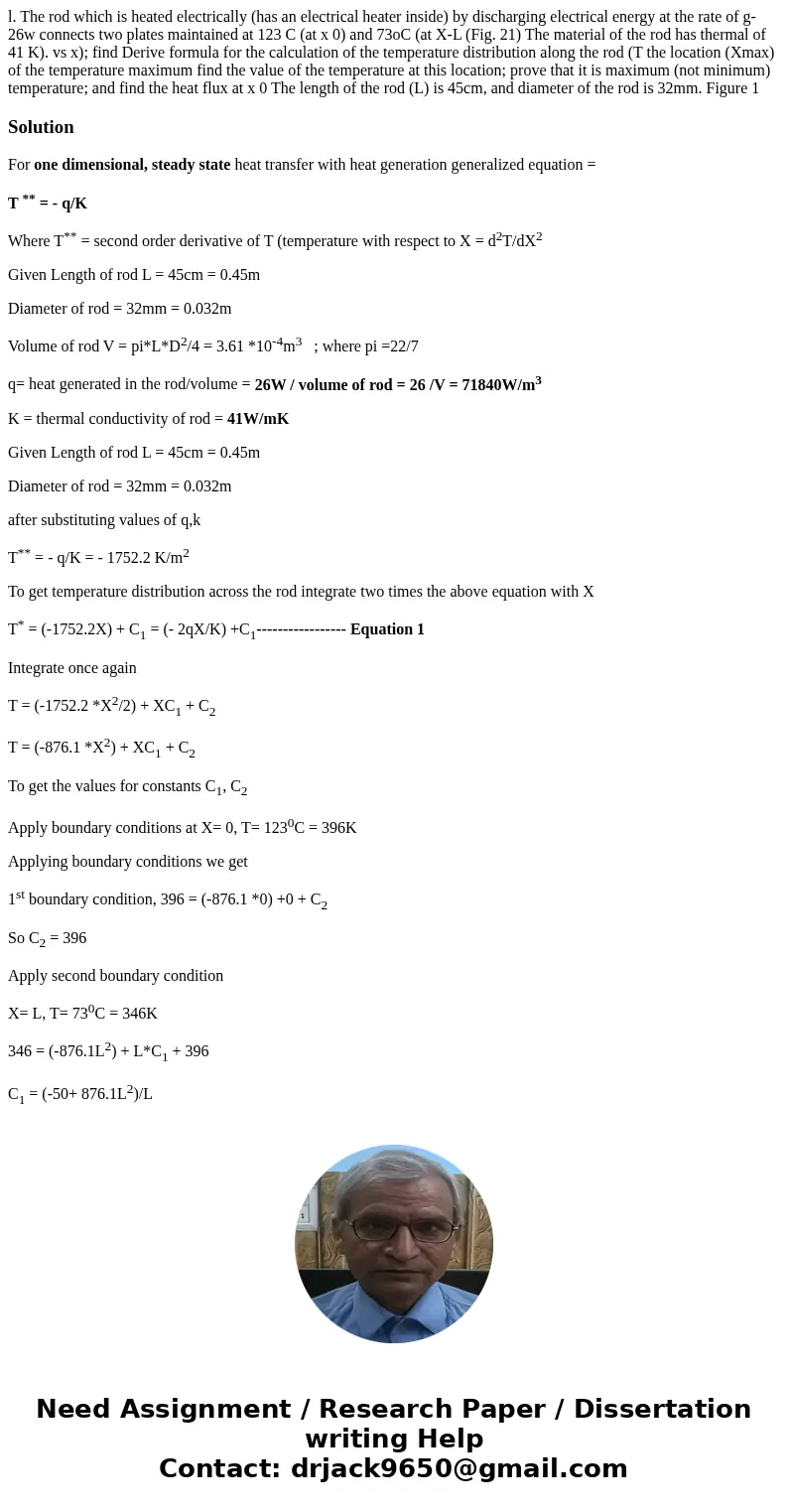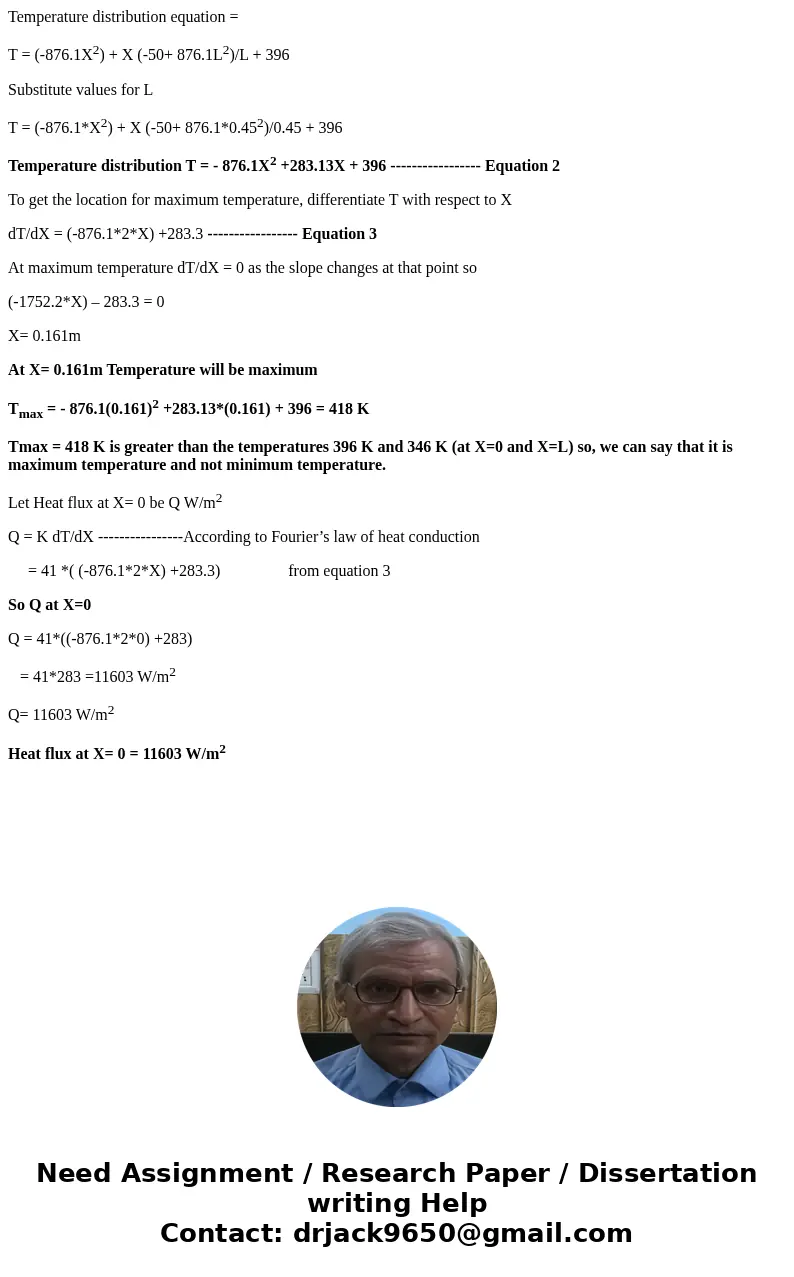l The rod which is heated electrically has an electrical hea
Solution
For one dimensional, steady state heat transfer with heat generation generalized equation =
T ** = - q/K
Where T** = second order derivative of T (temperature with respect to X = d2T/dX2
Given Length of rod L = 45cm = 0.45m
Diameter of rod = 32mm = 0.032m
Volume of rod V = pi*L*D2/4 = 3.61 *10-4m3 ; where pi =22/7
q= heat generated in the rod/volume = 26W / volume of rod = 26 /V = 71840W/m3
K = thermal conductivity of rod = 41W/mK
Given Length of rod L = 45cm = 0.45m
Diameter of rod = 32mm = 0.032m
after substituting values of q,k
T** = - q/K = - 1752.2 K/m2
To get temperature distribution across the rod integrate two times the above equation with X
T* = (-1752.2X) + C1 = (- 2qX/K) +C1----------------- Equation 1
Integrate once again
T = (-1752.2 *X2/2) + XC1 + C2
T = (-876.1 *X2) + XC1 + C2
To get the values for constants C1, C2
Apply boundary conditions at X= 0, T= 1230C = 396K
Applying boundary conditions we get
1st boundary condition, 396 = (-876.1 *0) +0 + C2
So C2 = 396
Apply second boundary condition
X= L, T= 730C = 346K
346 = (-876.1L2) + L*C1 + 396
C1 = (-50+ 876.1L2)/L
Temperature distribution equation =
T = (-876.1X2) + X (-50+ 876.1L2)/L + 396
Substitute values for L
T = (-876.1*X2) + X (-50+ 876.1*0.452)/0.45 + 396
Temperature distribution T = - 876.1X2 +283.13X + 396 ----------------- Equation 2
To get the location for maximum temperature, differentiate T with respect to X
dT/dX = (-876.1*2*X) +283.3 ----------------- Equation 3
At maximum temperature dT/dX = 0 as the slope changes at that point so
(-1752.2*X) – 283.3 = 0
X= 0.161m
At X= 0.161m Temperature will be maximum
Tmax = - 876.1(0.161)2 +283.13*(0.161) + 396 = 418 K
Tmax = 418 K is greater than the temperatures 396 K and 346 K (at X=0 and X=L) so, we can say that it is maximum temperature and not minimum temperature.
Let Heat flux at X= 0 be Q W/m2
Q = K dT/dX ----------------According to Fourier’s law of heat conduction
= 41 *( (-876.1*2*X) +283.3) from equation 3
So Q at X=0
Q = 41*((-876.1*2*0) +283)
= 41*283 =11603 W/m2
Q= 11603 W/m2
Heat flux at X= 0 = 11603 W/m2


 Homework Sourse
Homework Sourse